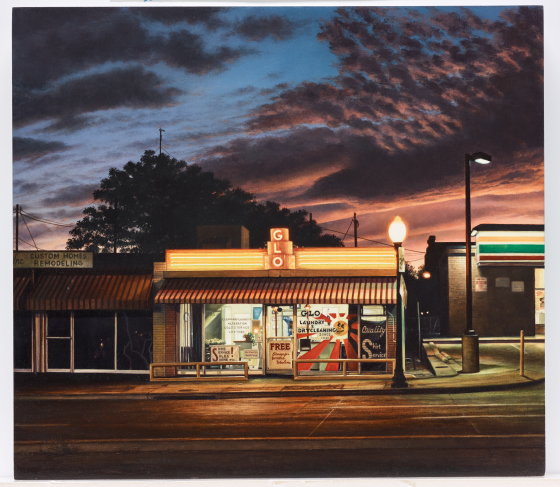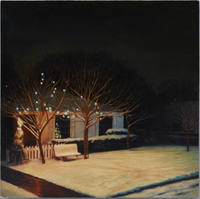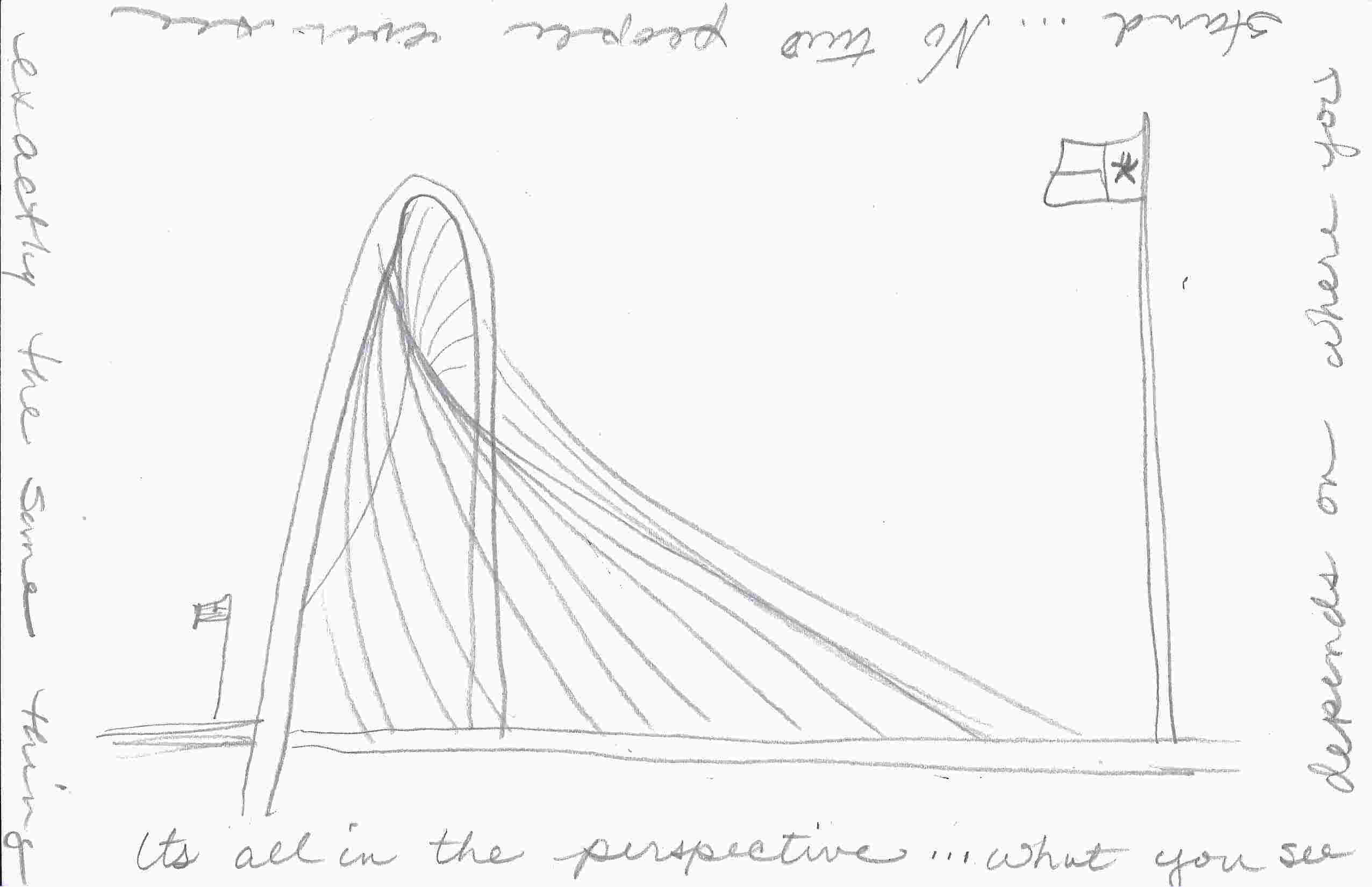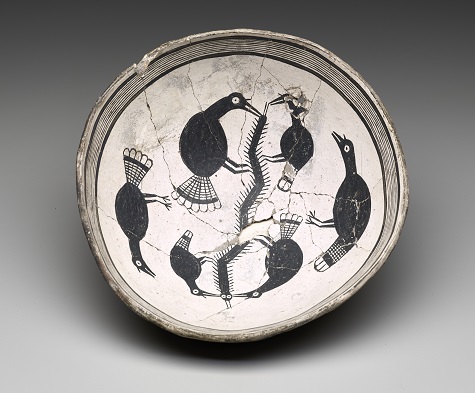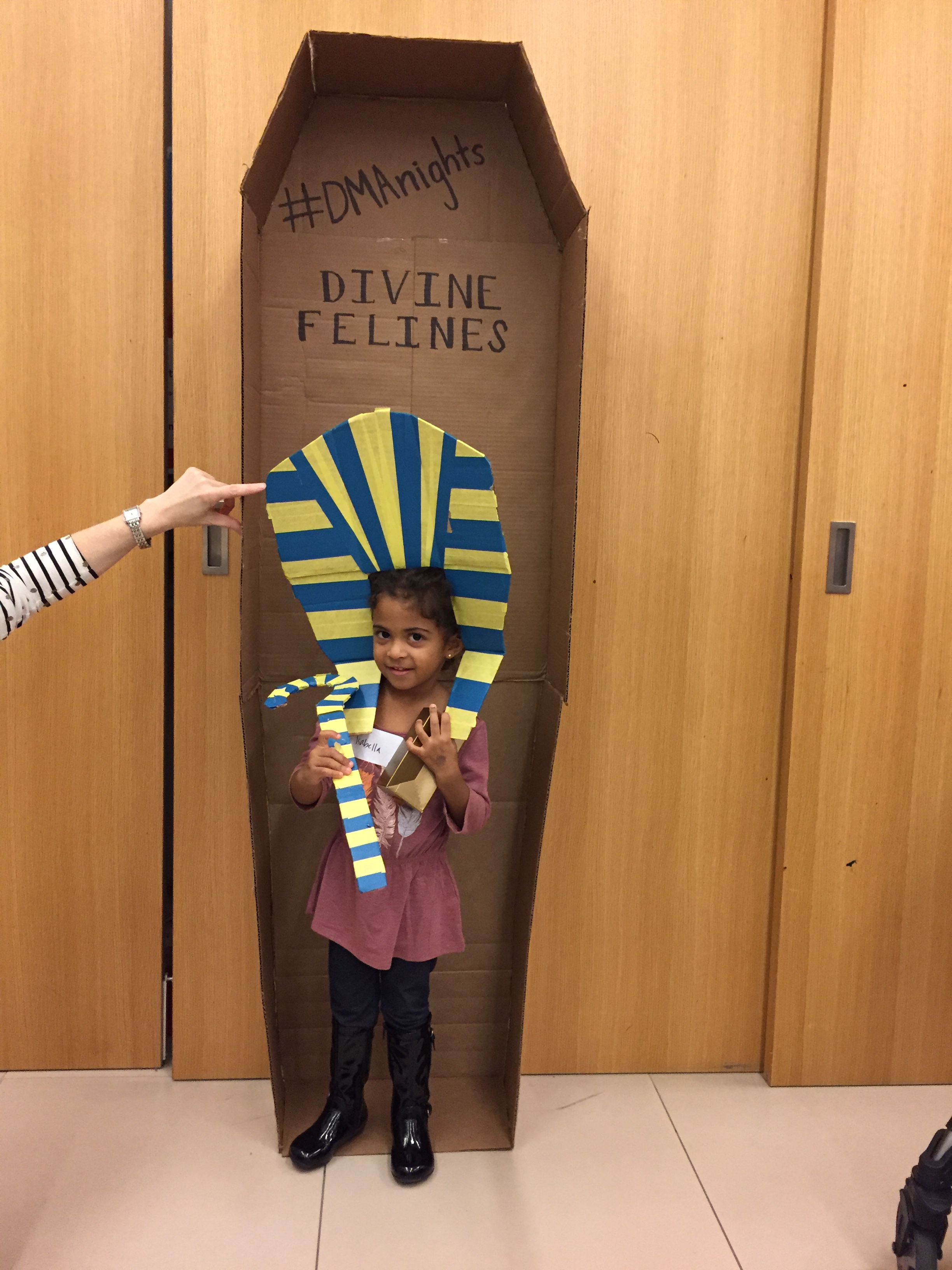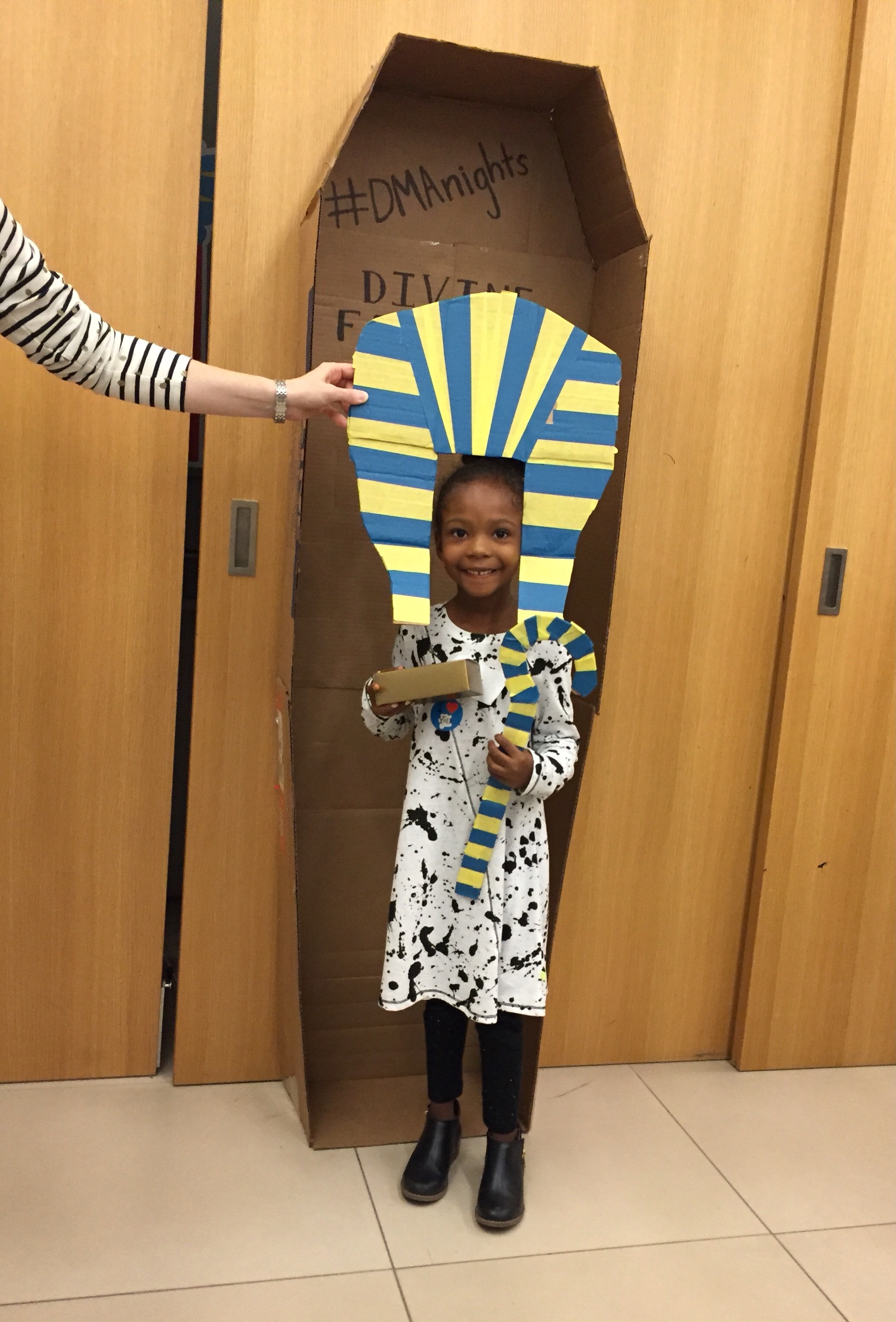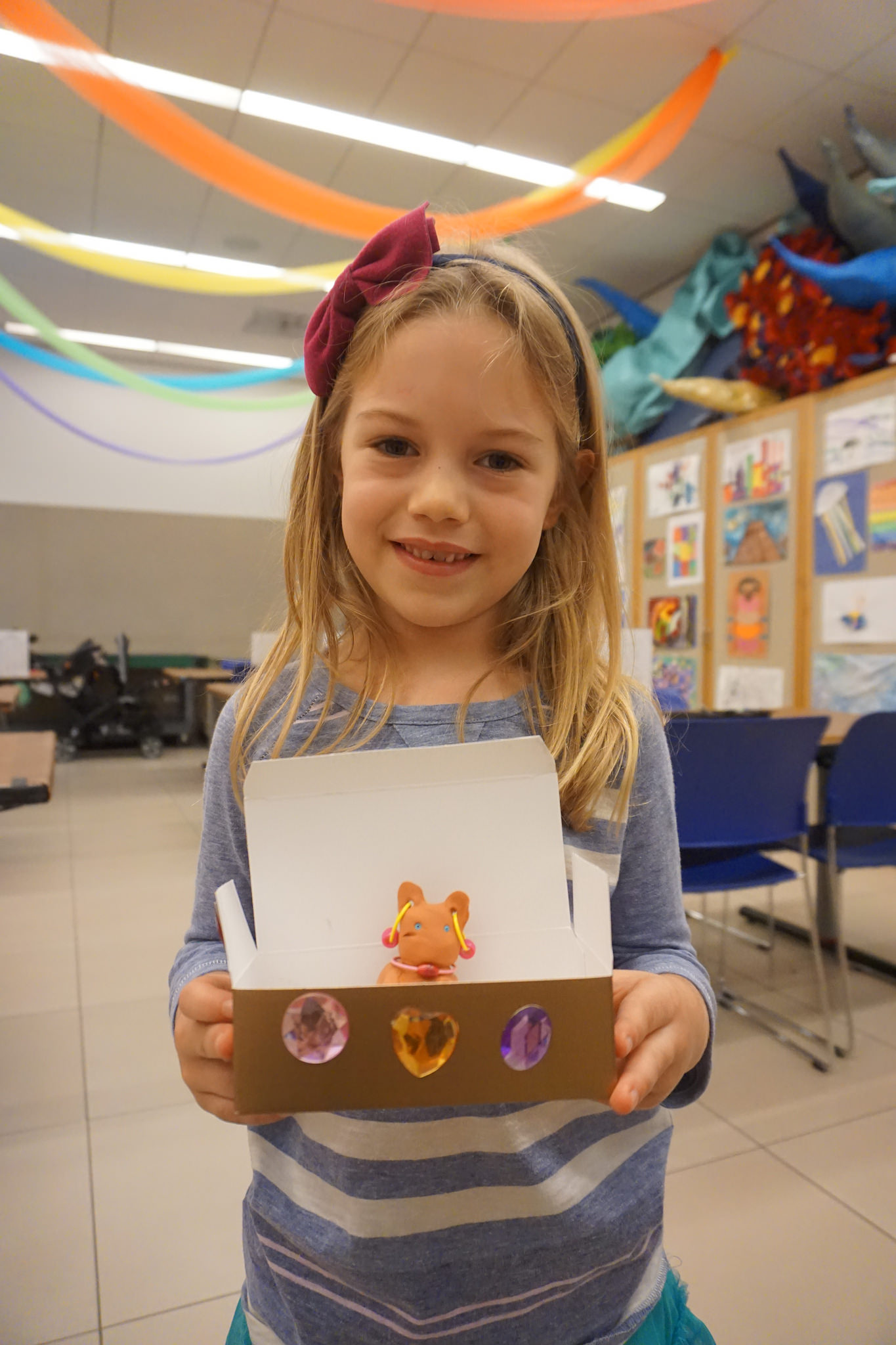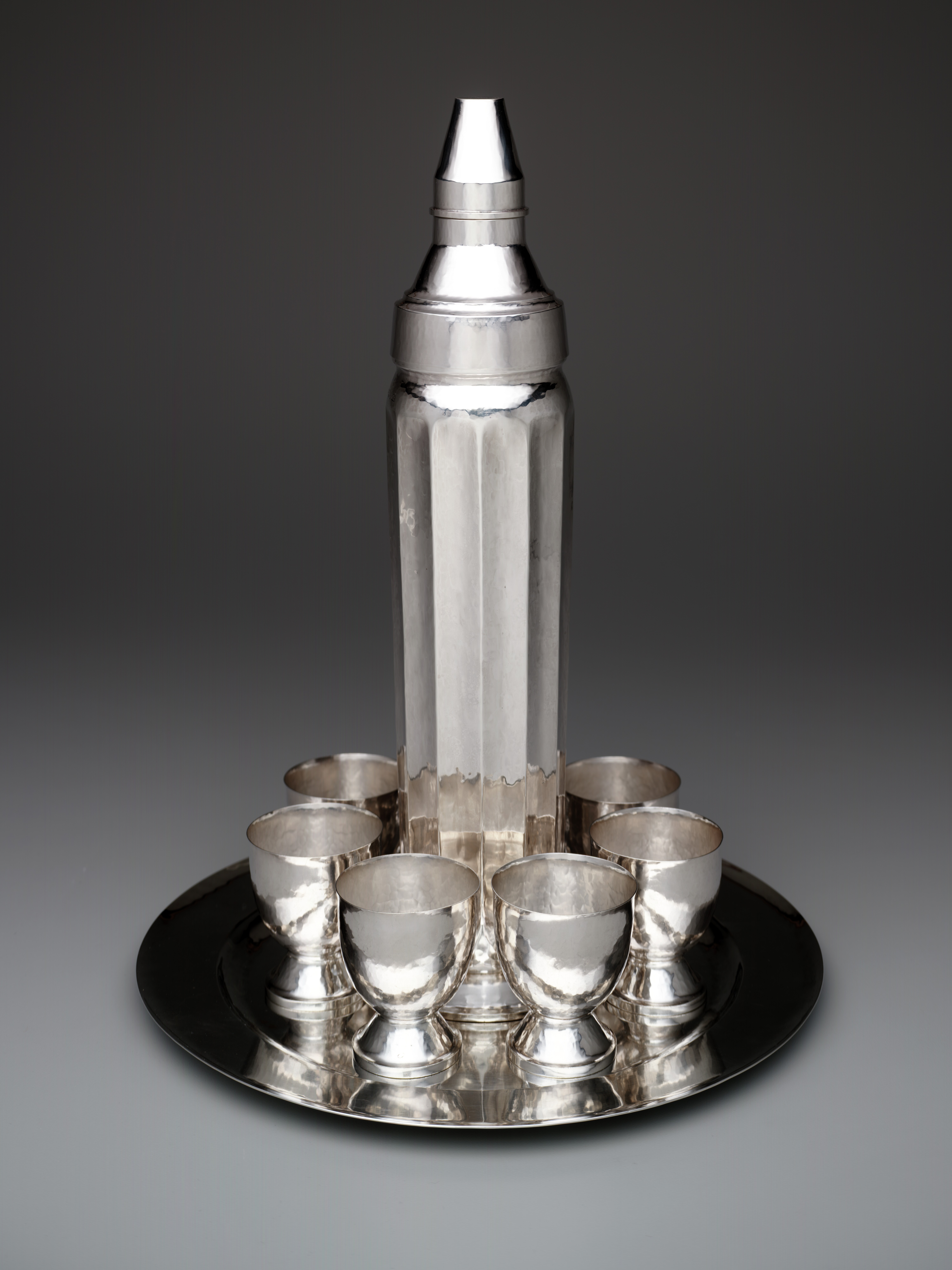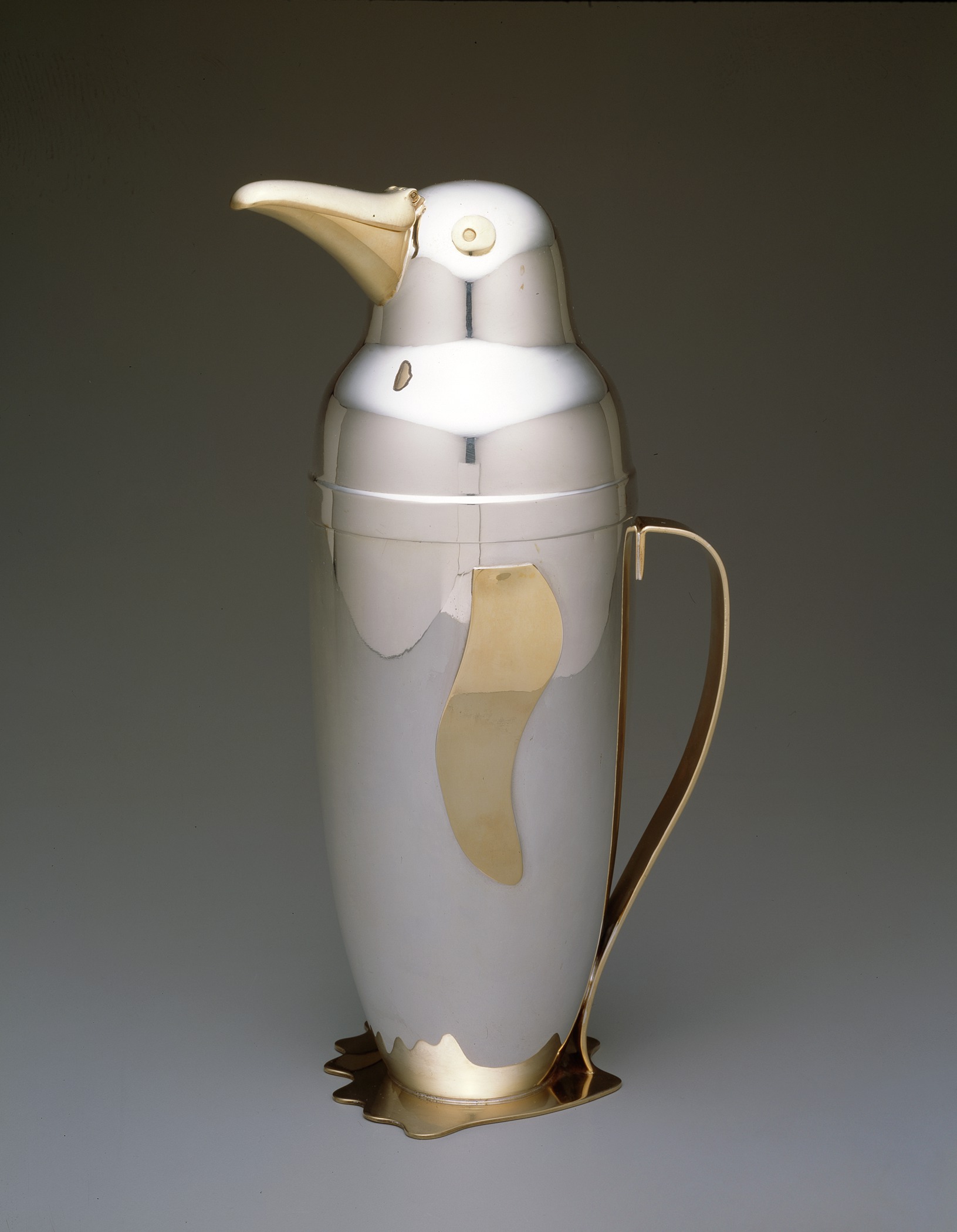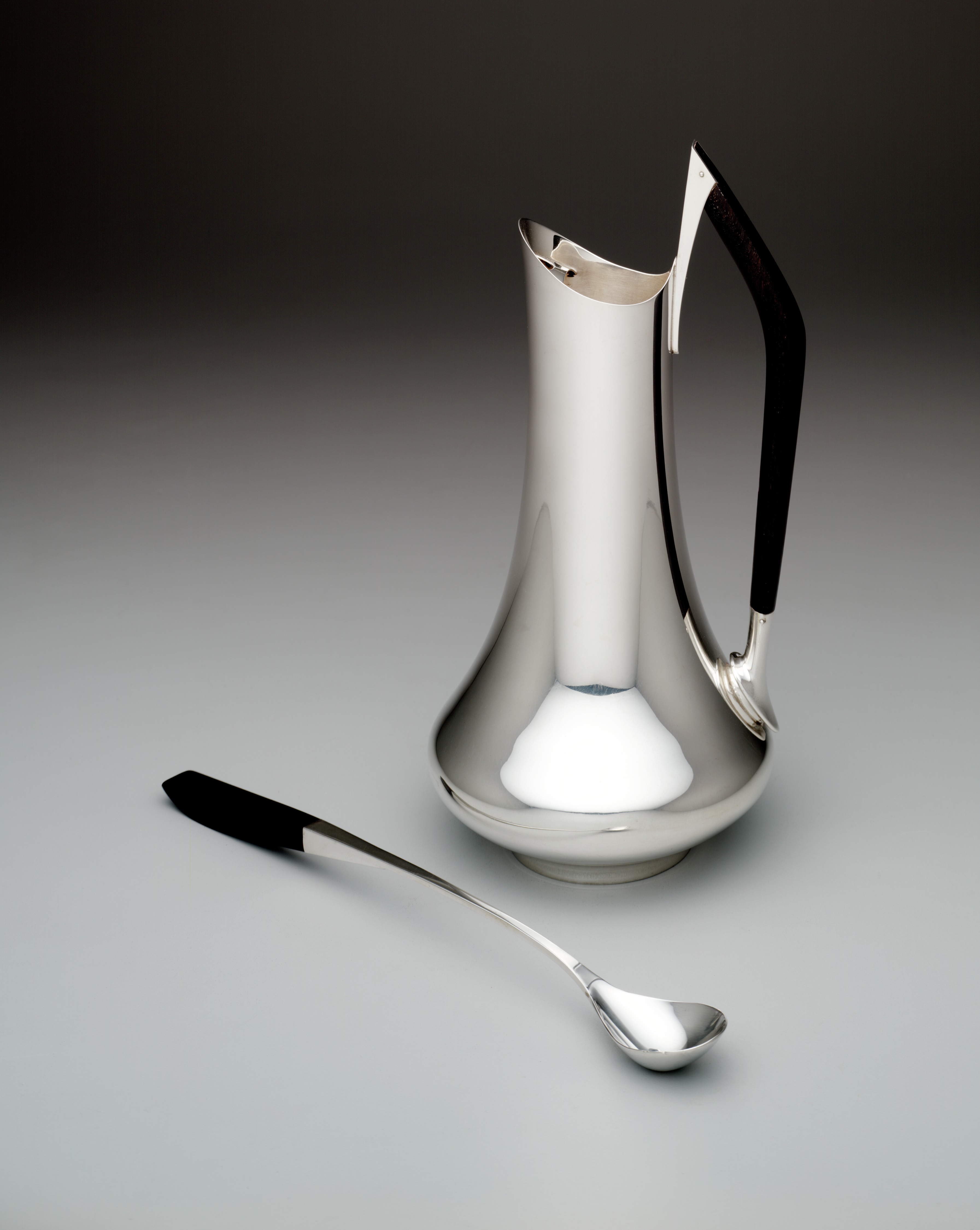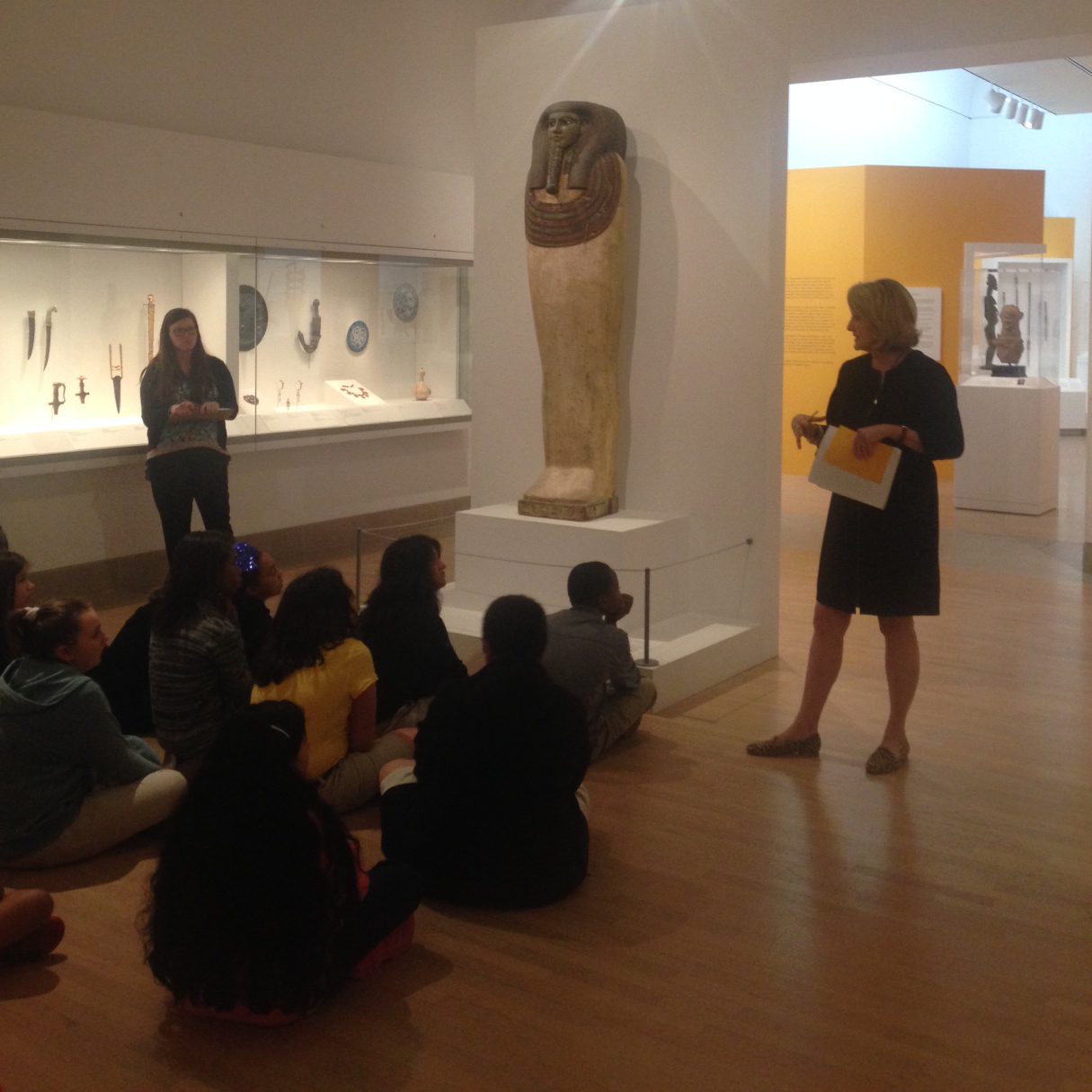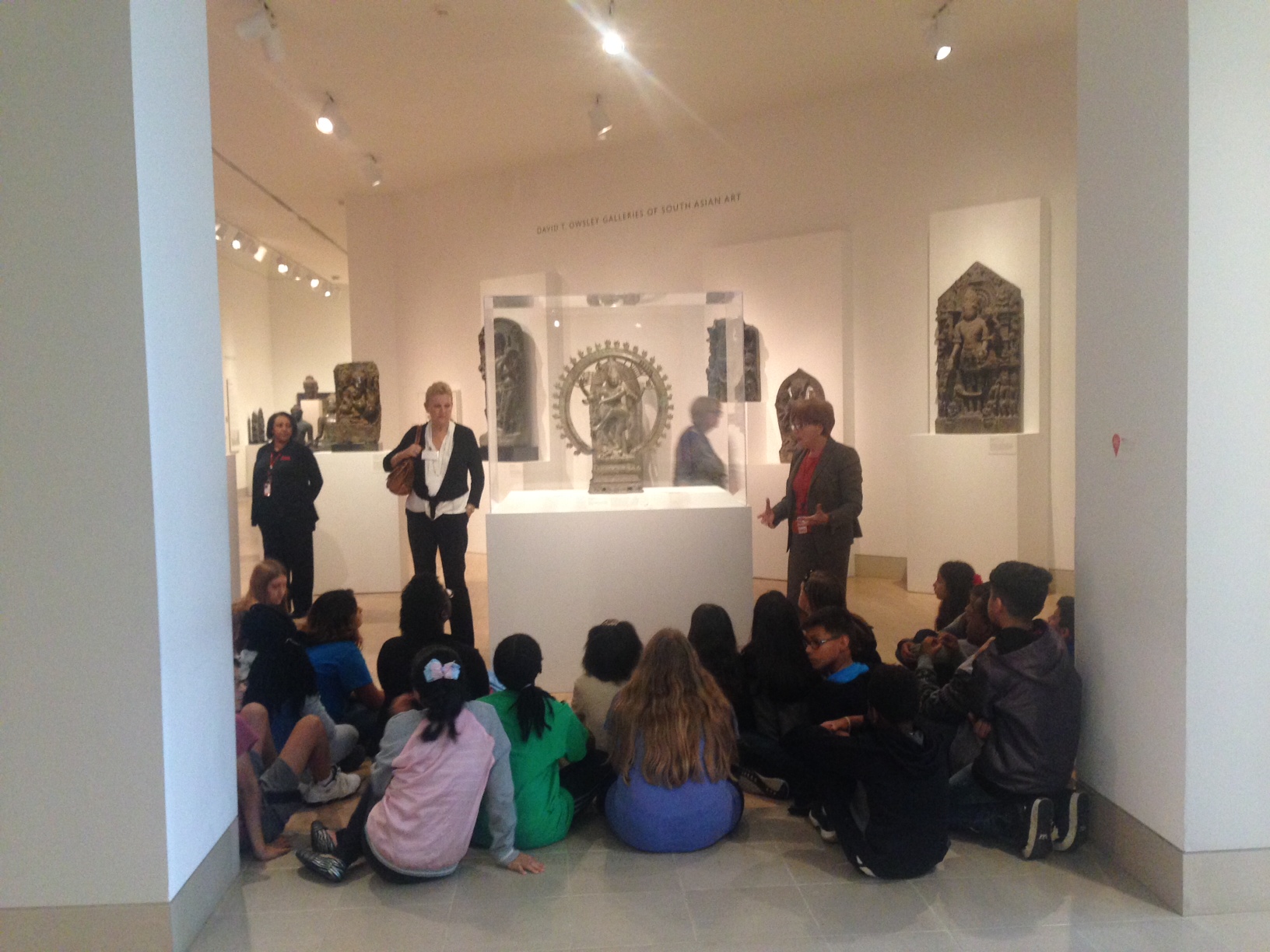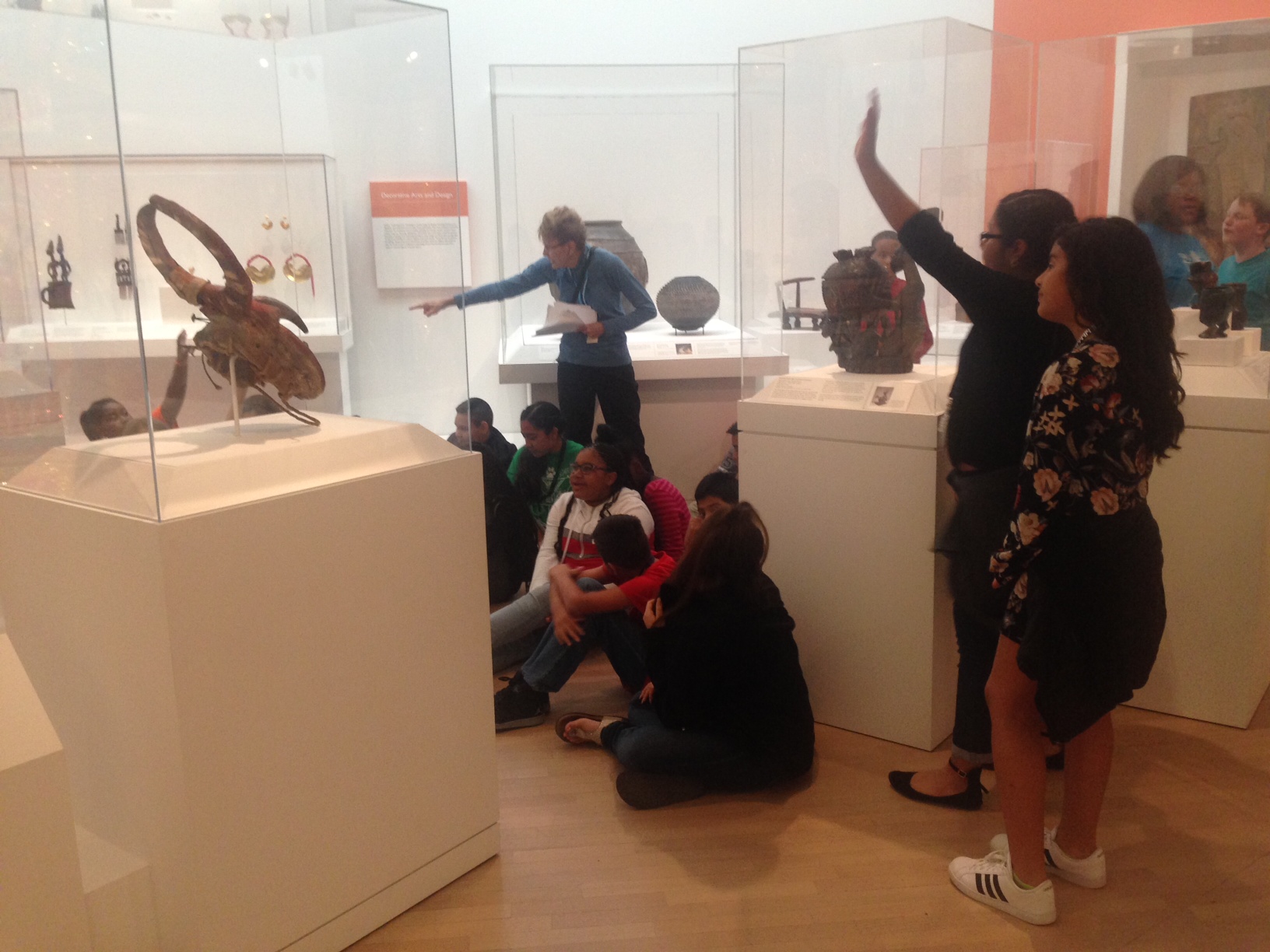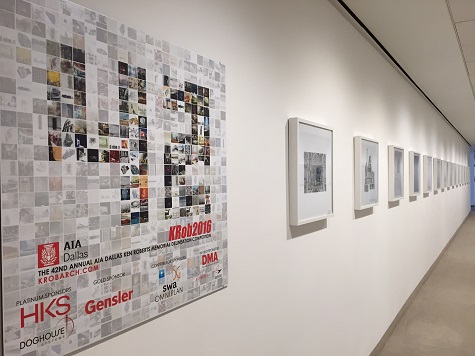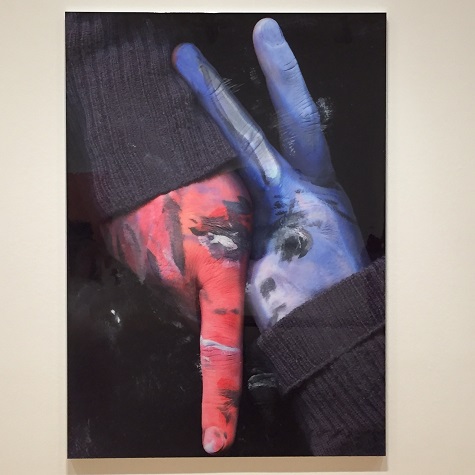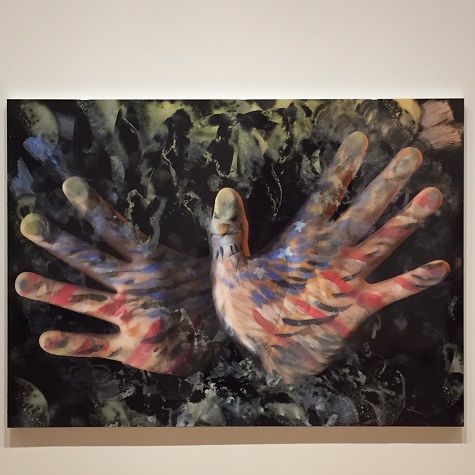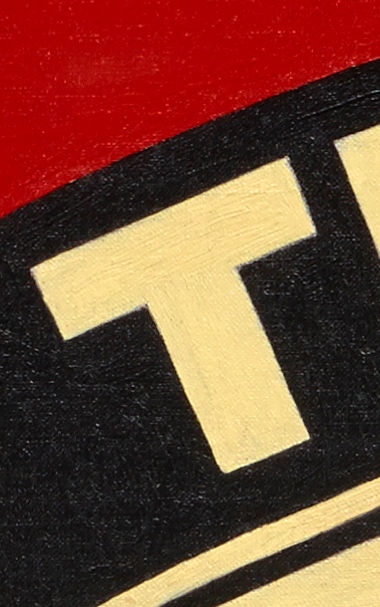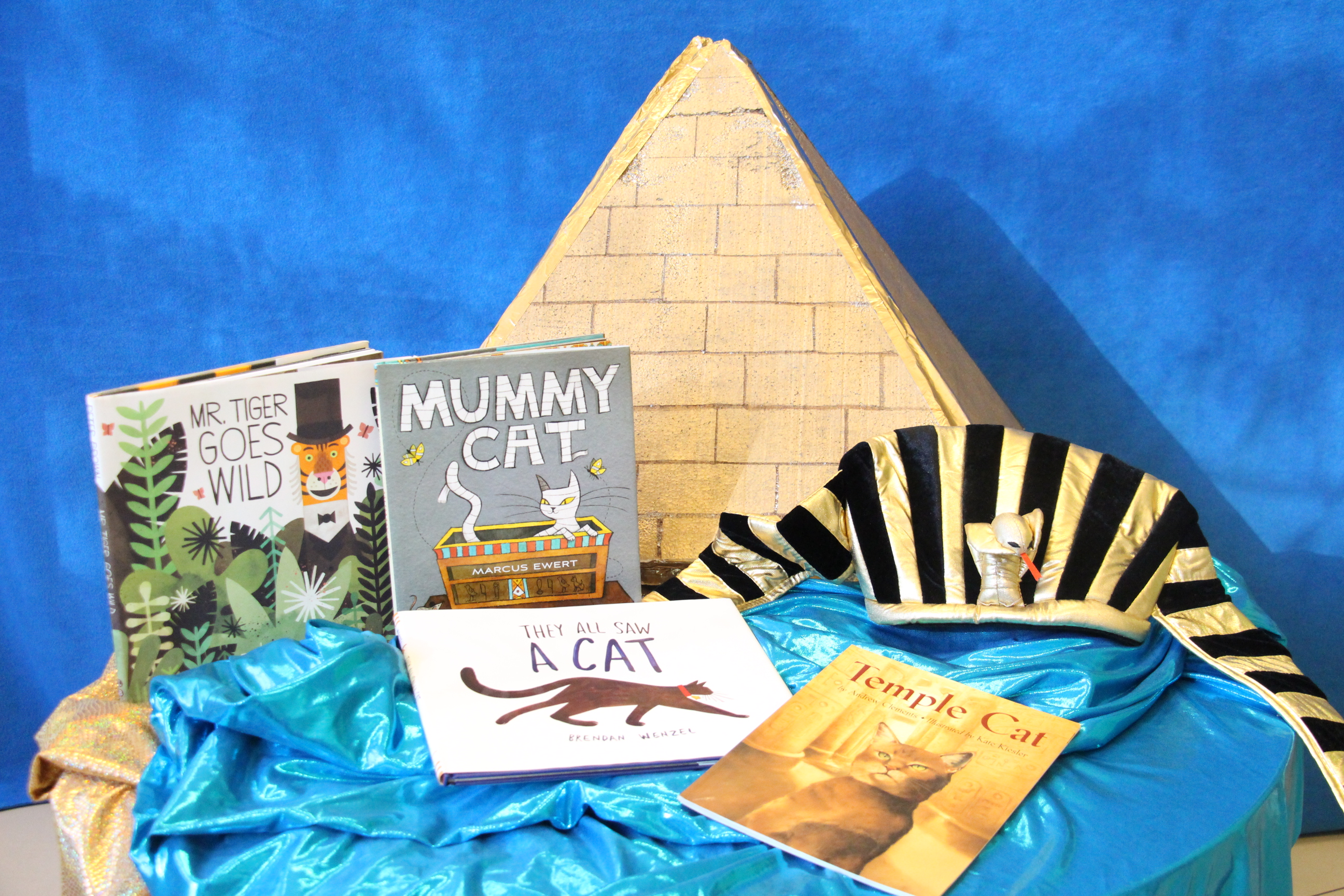
This month I’ve been spending a lot of time in Divine Felines: Cats of Ancient Egypt with preschoolers. Ancient Egypt is always endlessly fascinating for young children, but add in cats and picture books, and you’ve got a triple threat! I’ve gathered up some purrrfect picture books for any kid cat-lovers—two of the stories take place in ancient Egypt and two are catchy tales you won’t want to miss.
With a rustle and a whisper, a little mummy cat wakes up deep in a pyramid and goes in search of his mistress and friend, Queen Hat-Shup-Set. As he journeys through the corridors, paintings on the wall tell the tale of his past life and the tragic fate of his Queen. Brown’s illustrations paint a story-within-a-story, and young readers will love pouring over each little detail and will beg to read this book again and again. Look for three little mice hiding on many of the pages and search for hieroglyphs sprinkled throughout the illustrations. An author’s note on mummies, hieroglyphs, and Queen Hat-Shup-Set make this book an excellent introduction to ancient Egypt. And if you visit Divine Felines, you can see an authentic cat sarcophagus!
A cat lives like a king in the temple, with servants to care for his every need, but all he dreams of is a life beyond the temple walls. So one night, he quietly slips out and embarks on an adventure, sleeping in barns, catching his own food, and making friends with some children. Along the way, he discovers his greatest dream—to be loved as an ordinary cat. Cat-lovers will especially love how Kiesler captures the very “cat-ness” of our hero as he licks his paws, revels in chin tickles, or weaves around a child’s leg. The background illustrations however, are just as beautiful, painting a vivid picture of what ancient Egyptian life might have been like.
“The cat walked through the world, with its whiskers, ears, and paws…” With this lyrical beginning, Wenzel takes readers on a journey of perspective, imagining different encounters between a cat and its surroundings. With each page turn, we see the cat from a different point of view. A child sees a cuddly, friendly companion. A dog and fox see something to chase. A fish and a mouse see a huge, scary creature to be avoided at all costs! A flea sees a warm place to take a nap. The text itself is incredibly simple, but the illustrations take on a life of their own, challenging young readers to consider how one animal (or by extension, person) can be so many different things. And for art-loving kids, the way Wenzel changes his style to fit each creature’s perspective is truly magical. They All Saw a Cat is already getting some buzz for the coming picture book awards season!
Mr. Tiger is tired of his prim and proper life, and decides something needs to change. HE needs to change! And so he goes “wild.” But does he go just a little too far? I’ve written about this book before here, and it still continues to be a go-to favorite for story time. One page turn in particular ALWAYS elicits shrieks of laughter and gasps, and I can’t help but love it when the children roar right along with Mr. Tiger.
What’s your favorite meow-sterpiece in cat picture books? Please share in the comments below!
And as always—happy reading!
Leah Hanson
Manager of Family and Early Learning Programs


